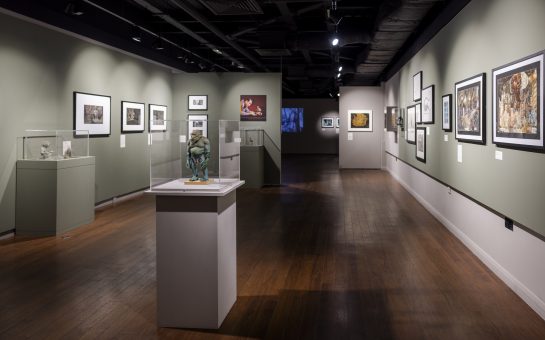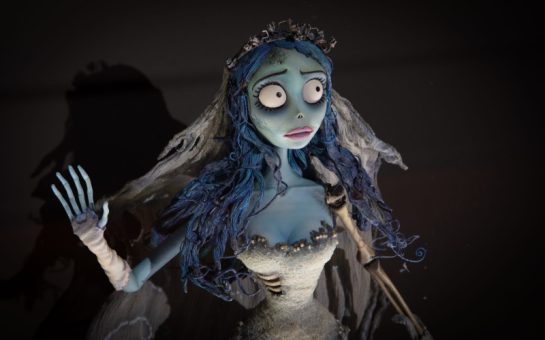Their work helped establish the animation industry in Britain and their influence still remains strong.
With series like Danger Mouse, and Chorlton and the Wheelies, and with their animated film of Kenneth Graham’s The Wind in the Willows, Brian Cosgrove and Mark Hall made a pioneering and lasting contribution to the animation industry in Manchester and in Britain as a whole.
And the original models and drawings that were the basis of that achievement will now have a permanent home at the Waterside Arts Centre in Sale, Greater Manchester.
The move to Sale and the rescue of this collection is due to the collaboration of Westley Wood and Richard Evans.
Westley, managing director of Animation Toolkits Ltd has been involved in the animation business for a number of years while Richard runs Creative Industries Trafford which delivers professional development support to artists and creatives.
Talking about the influence of Cosgrove and Hall, Westley says: “They were making animation series at an incredible level. Nothing like that had ever been made in the UK previously – they started off an animation industry in this country.”
He also speaks with enthusiasm about The Wind in the Willows: “It was such a fantastic undertaking. It was cinematic – that level of detail in stop motion – it’s just a fantastic work of art. The puppets and the sets and the scenery were so rich and beautiful”
Westley has a lot of experience in the animation sector. His company manufactures armature kits, armatures being the jointed skeleton frames for animation puppets, and he is currently freelancing with the BBC as a creative director.
He is keen to highlight the importance of Cosgrove and Hall for both Manchester and Britain.
“Danger Mouse, we don’t shout enough about it. What Mickey Mouse was for America, Danger Mouse was for Manchester and England,” he said.
He is not the only one to credit them.
The Altrincham-based animation company Mackinnon and Saunders which produced Bob the Builder as well as the puppets for Fantastic Mr Fox and the Corpse’s Bride, owes a lot to Cosgrave Hall.
Founders Mackinnon and Saunders both started their careers as employees of Cosgrove Hall.
Saunders said: “It was a really, truly, great company to work for.
“I joined the company a year after it started and so there was only a small handful of people there, maybe about nine or ten people, but over the years it grew to about 130, 140 people.
“Mark Hall and Brian Cosgrove were such great bosses to work under.”
Cosgrove and Hall had established their company, Cosgrove Hall productions, in 1976.
With a name derived from their then location in Chorlton, they produced a stop-motion animation series called Chorlton and the Wheelies in which an irrepressibly good-natured dragon called Chorlton protects the Wheelies (characters with wheels rather than legs) against the evil machinations of a green-faced witch called Fenella.
Their greatest success however came in 1981 with Danger Mouse.
The secret agent mouse with an eye-patch who operated from a post-box on Baker Street in London and was assisted by the hapless hamster Penfold, was an international success. The original series ran to 1992 and it has since been rebooted by the BBC.
Westley said: “It was a huge piece of animation. And it went on to be a sensation with its audience.
“It was hugely successful and then went on to sell round the world. It was a great piece of intellectual property and quintessentially British.
“The humour in it today still stands. The BBC have rebooted it for a new audience and it is as good now as it was then which is fantastic.”
Hall and Cosgrove retired in 2000 but their company continued until 2009.
Then, in large part because of the recession, Cosgrove Hall was closed down and the contents of the studio were put into storage.
And there they remained until they were discovered by Wood.
At that time he was working with ITV. Given that he has previously worked with both Cosgrove Hall and Mackinnon and Saunders, he was determined to save the material he had found.
Once ITV gave him the go-ahead to save and restore the material he had found, Westley contacted Richard Evans, who having already hosted exhibitions on the work of Mackinnon and Saunders as well as Aardman Animations, was keen to help out.
The collection is currently being photographed and catalogued before being moved to the Sale Waterside Centre.
Westley and Richard hope to have an exhibition there in November along with a permanent online archive to inspire future animators in the region.



